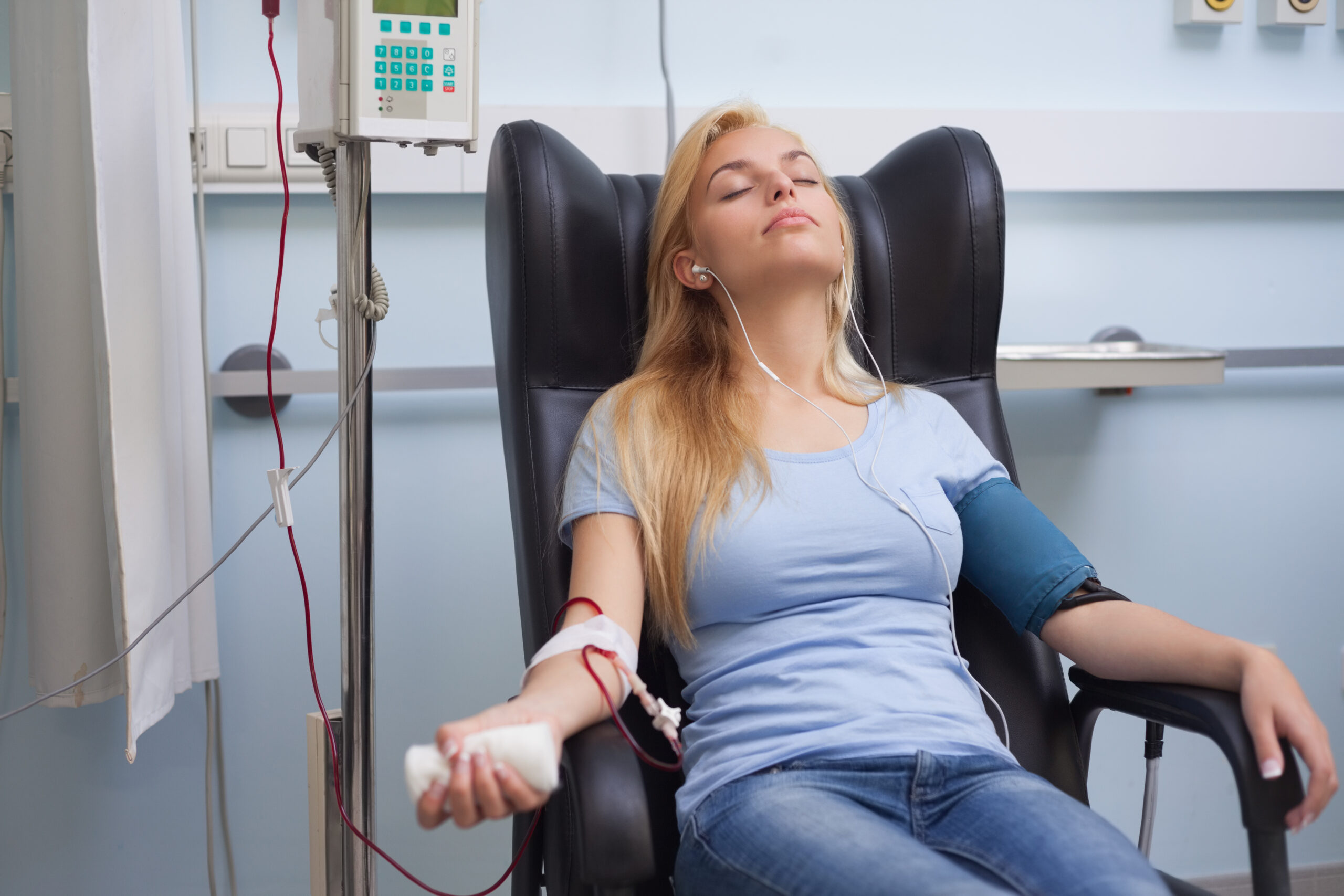What is IV Nutrition Therapy?
IV nutrition therapy bypasses the digestive system and provides vitamins and minerals straight into the bloodstream to improve absorption and effectiveness. Vitamin IV therapy, sometimes referred to as intravenous micronutrient therapy, gives a large amount of minerals and vitamins directly into your bloodstream. While your body typically takes nutrients slowly, IV nutrition therapy allows it to rapidly absorb nutrients at higher quantities. A more modern innovation that can be used in conjunction with a person’s diet to assist the body obtain the proper amounts of vitamins and minerals is intravenous nutrition treatment (IVNT). It is applied to patients and clients with a range of ailments or issues in different contexts.
Why IVNT?
If an individual can’t take their meds orally owing to vomiting or if they require an immediate dose of antibiotics due to a severe infection or sepsis, they will need IV therapy.
1) Direct delivery of nutrients and hydration
Through an IV drip, IVNT is given to the patient, going straight into the bloodstream. This permits the nutrients to reach the cells via passive transport, which uses less energy since they simply diffuse from an area with a high concentration of these nutrients to an area with a low concentration. The nutrients are available faster, which leads to quicker and more efficient results for the client.
2) Corrects vitamin and mineral deficiencies
The levels of vitamins and minerals in the body can be maintained or slightly raised when a person takes oral supplements to address a deficiency. The nutrients are absorbed through the digestive system. On the other hand, IVNT can deliver higher and longer-lasting quantities of the necessary vitamins and minerals more quickly.
IVNT Overview
- IVNT is administered directly into the bloodstream. Sterile nutrients including vitamins, minerals, amino acids, and/or other naturally occurring compounds are blended into a typical intravenous solution to create infusions using vitamin drips. Total Parenteral Nutrition (TPN), which involves injecting all of a person’s nutritional needs including fluids, electrolytes, proteins, fats, carbs, vitamins, and minerals is not the same as intravenous nutritional support. IVNT is not meant to take the place of a person’s diet rather, it is meant to supplement it.
- At Texan Primary Care, patient comfort and safety come first. The personnel who tend to our IV patients, the design of the room, and the tools we use down to the needles have all been hand-picked. In order for everyone to benefit as much as possible from their therapy, Texan Primary care take safety very seriously and want them to feel at ease. In order to fully understand each patient and deliver the best care possible, we obtain a brief physical and medical history before starting any IV.
- Compared to other groups, elderly individuals are far more prone to suffer from a dietary deficit or get dehydrated. IVNT is frequently most beneficial for older persons because of a variety of variables that contribute to these inadequacies, such as frailty, weakened immune systems, and the natural decline in bodily functioning.
Benefits
- Intravenous (IV) therapy is the fastest way to give your body the nutritionist needs.
- Some medications and medical issues can interrupt your body’s ability to properly
- Absorb the nutrients it needs to function correctly.
- Because of its many health benefits, including anti-aging, immune system enhancement, anxiety reduction, hangover symptom reversal, and more IVNT is frequently used.
- With IV therapy, you can rest assured the vitamins are completely and quickly absorbed into your bloodstream, which allows your body to utilize them immediately.
- The most effective method of giving your body the right amount of fluids to support the functions of all essential organs is IV treatment.
- It can help prevent medical issues like kidney stones, constipation, and damage to your muscles.
- Your food may take up to two days to fully digest. With IV therapy, you can begin to feel the therapeutic benefits on your body almost instantaneously.
Uses of Intravenous Nutrient Therapy
The benefits of IVNT that have been recorded are numerous and range from appearance to overall health, including:
- Exhaustion and Dehydration
- Illness
- Common cold
- Dry Skin
- Poor nails and hair
- Having asthma
- Jet lag
- Poor sleep or insomnia
Risk Factors
- Infections can occur at the IV insertion site or systemically, especially if aseptic techniques are not followed.
- IV fluid leaks into surrounding tissues, causing pain and potential tissue damage if not treated promptly.
- IV therapy can trigger allergic reactions, from mild rashes to severe anaphylaxis, particularly related to medications or Materials.
Conclusion
Whether for medical treatment or wellness support, IV therapy should always be administered under the guidance of a healthcare professional to ensure safety and suitability for needs. In Texan Primary Care, Dr. Sathish Karmegam and Team treat the patient, not just the symptoms. After spending time listening to you, our providers create a care plan that suits your needs. Enjoy easy access to care, online scheduling, and flexible appointment times that suit your busy life at Texan Primary care.
IVNT FAQs
Health Conditions that Benefit from IV Nutrition Therapy
IVNT is used to treat dementia or memory loss, wound Care, surgery, pain, poor metabolism, skin concerns, recovery after cancer treatment, weight Loss and several other health issues. Moreover, IVNT can also aid in the management of autoimmune diseases, multiple sclerosis, stroke, thyroid disorders, asthma, respiratory infections, and numerous other conditions, establishing it as a prevalent therapeutic approach.
How many treatments will I need?
Texan Healthcare advises that you receive IV nutrition therapy once a week for four weeks in order to get the most out of your treatment. After that, one every two weeks or one every month. Then, once-monthly maintenance sessions might be suggested.




